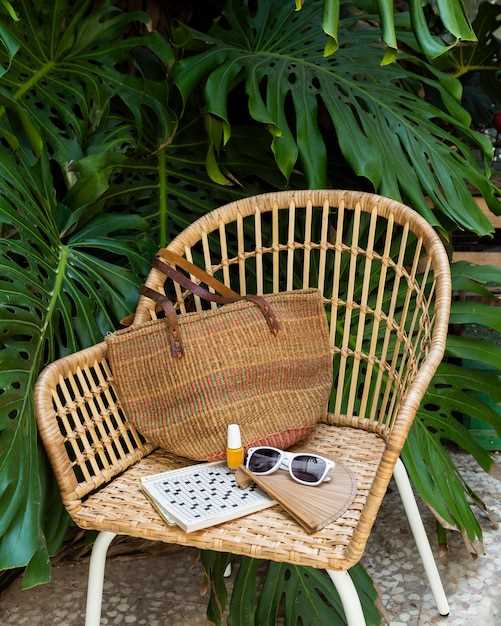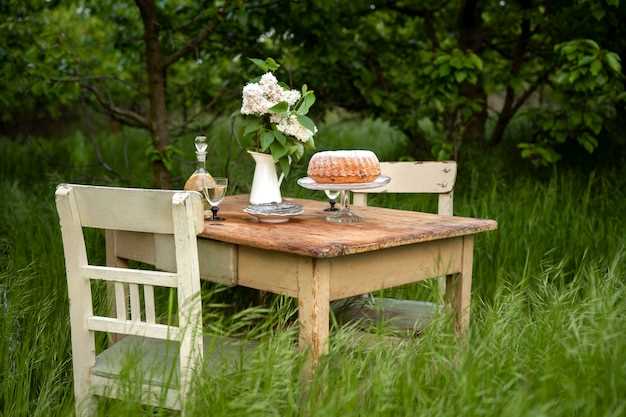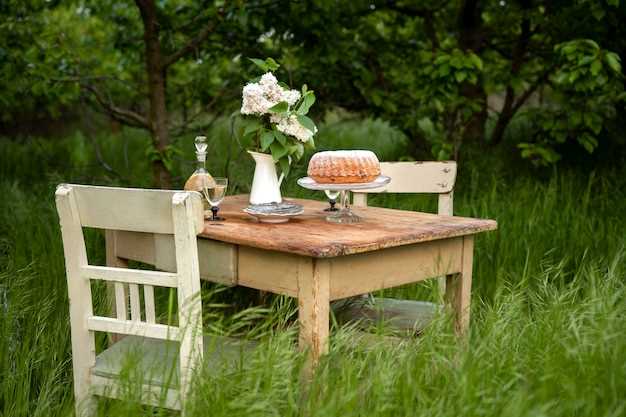In a world increasingly influenced by mass production, the allure of authentic, rustic elements becomes stronger. Antique charm meets modern ingenuity in creations that tell a story. As people become more aware of their choices, the focus shifts towards sourcing materials that possess both character and history. It’s not merely a trend; it’s a movement towards genuine connections with our surroundings.
Every item crafted from these natural resources resonates with integrity. Each piece reflects the journey it has undertaken, offering a unique touch to interior spaces. From robust tables to delicate accents, the beauty lies in their diversity. The craftsmanship involved in repurposing old materials enhances their appeal, creating an environment that honors the past while embracing the present.
Incorporating these treasures adds warmth to any room. The textures and hues invoke a sense of comfort that mass-produced items simply cannot match. Those who choose these designs often find joy in a lifestyle that prioritizes integrity and authenticity over conformity. Living sustainably is not just about making eco-conscious choices, but about fostering a deeper relationship with our planet.
As we become more mindful of our consumption habits, the desire for originality drives innovation. By choosing such designs, we contribute to a narrative that promotes environmental stewardship. Each acquisition is a step towards a harmonious coexistence with nature. In essence, embracing these artistic creations allows us to celebrate uniqueness while honoring the resources that nature provides.
Recycled Wood Furniture: Eco-Friendly Style

Creating a unique atmosphere in your home often involves incorporating elements that tell a story. When choosing materials for decor, many people are drawn to options that reflect both creativity and responsibility. Every item can serve a dual purpose: to beautify and to protect our planet. One specific category of design embodies this principle most effectively.
Embracing unusual textures and vibrant colors, these pieces are anything but ordinary. They stand out not only for their aesthetic appeal but also for their origins. Transforming previously used materials into practical masterpieces allows individuals to express their values and showcase their commitment to thoughtful consumption.
- Natural imperfections add character to each piece.
- Quality craftsmanship ensures durability and longevity.
- Less waste contributes positively to environmental health.
- Every selection supports local artisans and communities.
- Versatile designs fit various interior themes effortlessly.
In an age when conscious choices matter more than ever, opting for items crafted from repurposed elements links beauty with purpose, encouraging a deeper connection between the owner and their environment. This unique approach vividly illustrates how functional aesthetics can pave the way for a more harmonious relationship with nature.
Benefits of Using Recycled Wood

Choosing materials that have a history offers numerous advantages. This approach not only emphasizes creativity but also highlights a commitment to the environment. When you opt for these materials, you make a statement. The uniqueness and character of each piece tell a story. Every item carries a legacy.
Here are some key advantages:
- Reduction in waste and pollution.
- Conservation of natural resources.
- Less energy consumption during processing.
- Distinctive aesthetics and charm.
- Positive impact on local economies.
By utilizing previously crafted materials, we effectively minimize our ecological footprint, fostering a healthier planet for future generations while simultaneously celebrating the artistry inherent in reclaimed designs.
Moreover, these materials often come at a more affordable price, making stunning designs accessible. The beauty lies in their imperfections, which provide a sense of authenticity. Alternatives mean every piece is truly one-of-a-kind.
Investing in such selections also leads to durability and longevity. Often stronger than new options, they withstand the test of time. The unique patinas and textures add depth to any space.
Ultimately, embracing these choices is a win-win. You not only enhance your environment but also nurture the planet. It’s a beautiful way to merge ethics with aesthetics.
Environmental Impact of Wood Recycling
Utilizing reclaimed materials offers significant benefits for our planet. It reduces the demand for new resources, helping to preserve forests. This practice cuts down on waste, diverting usable items from landfills. Moreover, it fosters a cycle of reusability, enhancing the longevity of existing materials.
By opting for previously used materials, we not only minimize deforestation but also lower the carbon footprint associated with manufacturing new items. The environmental consequences extend beyond just conservation; they include reduced energy consumption during production processes. Additionally, the decreased need for transport of raw materials significantly contributes to lower emissions.
This practice promotes biodiversity, which is crucial for maintaining healthy ecosystems. When forests are spared from logging, countless species can thrive, creating a balanced habitat. Furthermore, recycling reduces the amount of waste that ends up in landfills, which can take years to decompose.
Choosing reused resources often leads to unique designs that tell a story. Each piece carries history, embodying craftsmanship and character that can’t be replicated. Such choices resonate with environmentally conscious individuals seeking deeper connections with their belongings.
The ripple effect of this trend is profound, influencing industries and consumer habits alike. As awareness of the environment grows, more people are drawn to alternatives that prioritize restoration over creation. Ultimately, this shift leads to a healthier planet for future generations.
Durability and Longevity
When it comes to sustainable products, strength and endurance are paramount. These qualities ensure the investment remains valuable over time. Well-crafted items withstand daily wear and tear, making them a smart choice for any environment. They are not only practical but also tell a story of careful production that honors the past.
High-quality craftsmanship plays a significant role in achieving lasting results. The choice of materials and construction techniques greatly impact durability. Items made from carefully selected elements combined with skilled artisanship create pieces that endure. This is especially true when products are designed with both beauty and function in mind, allowing for a balanced integration into various settings.
Furthermore, the natural aging process often enhances the aesthetic appeal of these products. As time goes by, they develop unique characteristics that reflect their individual journeys. Each scratch and mark tells a story, adding to their charm. This evolving nature invites appreciation for imperfections, transforming them into celebrated features.
In essence, investing in these enduring creations means supporting a circular approach that values longevity over disposability. Choosing durable options not only benefits individual households but also contributes positively to the overall environment. By selecting items designed to last, consumers foster a mindset that prioritizes quality over quantity. This shift in perspective promotes a culture that respects our planet as well as the resources it provides.
Aesthetic Appeal and Uniqueness
The charm of artistry thrives in items born from reclaimed materials. Each piece tells its own story, resonating with a character developed over years. This narrative is often marked by the subtle imperfections that enhance its allure. It’s not just about functionality; it’s a celebration of individuality and heritage.
Nature crafts each element uniquely. No two items are alike, ensuring that your collection remains distinctive. This variability creates an engaging visual landscape, appealing to the senses. The elegance found in these creations reflects a deep appreciation for craftsmanship.
- Rich textures add depth.
- Warm tones evoke a sense of comfort.
- Unconventional designs captivate attention.
- Historical significance enriches every piece.
When you introduce these exceptional items into your surroundings, you aren’t just decorating; you are forging an emotional connection that resonates with the essence of existence, effortlessly blending beauty with a sense of purpose that inspires creativity and appreciation for what once was.
Embracing such creations fosters an environment filled with warmth and authenticity. It’s a journey into the past, transforming every setting into a gallery of emotions. The intention is clear: to create spaces that inspire and invite. And amidst this journey, you discover endless possibilities for expression.
Incorporating Recycled Wood in Interiors
Introducing reclaimed materials into a home can transform its ambiance. The organic textures and unique character of these elements create a warm, inviting atmosphere. Each piece tells a story, adding depth and personality to every room. Whether used as flooring, wall accents, or supporting structures, such materials offer versatile design possibilities.
Designers often highlight their rustic charm while blending seamlessly with modern aesthetics. By combining old and new, one achieves a harmonious balance that feels both contemporary and lived-in. The contrast between aged surfaces and sleek finishes captivates the eye. Think of the possibilities; an accent wall made of salvaged panels can become a focal point.
When shaping interiors, sustainability becomes a relevant consideration. It’s essential to check where the materials come from and how they were processed. This ensures that the choices made are not only beautiful but also respectful towards the environment. Beyond aesthetics, these choices promote a deeper awareness of consumption habits.
| Room Type | Design Ideas |
|---|---|
| Living Room | Accent wall, coffee tables, shelving units |
| Kitchen | Counters, island bases, cabinets |
| Bedroom | Headboards, nightstands, dressers |
| Office | Desks, bookcases, conference tables |
By understanding how to integrate these materials thoughtfully, individuals can create spaces that resonate with authenticity. Each room becomes a reflection of personal taste and consciousness. Enjoy the creativity that stems from pairing the old with the new, while nurturing a sense of responsibility in choice. There’s beauty in both the design and the narrative behind each element.
Combining Styles for a Modern Look
In the realm of interior design, blending different influences can create a captivating ambiance. Modern aesthetics thrive on the juxtaposition of various elements. It allows for artistic expression and innovative combinations. The harmony found in contrast can redefine a space entirely. Balancing simplicity with intricate details often leads to delightful surprises.
This approach not only showcases creativity but also enhances the uniqueness of each piece. By thoughtfully merging influences, one can create an engaging narrative within the home. Classic charm can coexist with contemporary minimalism. Eclectic combinations add depth and character, making each room feel inviting and personalized.
| Style Combination | Description |
|---|---|
| Industrial Meets Vintage | Rustic accents alongside sleek metal elements create a balanced atmosphere. |
| Scandinavian with Bohemian | Light hues paired with vibrant decor offer a warm and welcoming vibe. |
| Modern Minimalist and Traditional | Clean lines softened by timeless pieces establish an airy elegance. |
When embracing this creative fusion, it’s essential to maintain a cohesive theme that resonates throughout the space. Selecting a unifying color palette can provide the necessary flow, making each element complement the overall layout seamlessly without overwhelming the senses.
Color Schemes and Finishing Touches
The choice of hues and final details is essential in creating inviting spaces. A well-thought-out palette can transform an area, making it more cohesive and aesthetically pleasing. Balancing bright and muted shades brings harmony. Textures and accents further enhance the atmosphere. Subtle variations contribute to depth and character.
Consider earthy neutrals combined with vibrant tones for a striking effect that invigorates the surroundings. A careful blend of colors can evoke specific feelings, guiding mood and inspiration. Shades of green and soft browns can create a calming environment reminiscent of nature. Meanwhile, splashes of bold colors can energize a room and serve as focal points.
Beyond just colors, the finishing touches are equally vital. Accessories, like cushions and throws, each play a role in defining personality. Choosing the right materials can also make a significant difference in overall appeal. Decorative items and art pieces should reflect the essence of the chosen theme, while furniture should harmonize with their vibe.
Incorporating texture through woven materials or ceramics adds dimension to a space. This integration provides visual interest while ensuring comfort. Moreover, thoughtful lighting choices can illuminate the best aspects of your design, casting a warm glow that invites relaxation. The interplay of elements and craftsmanship ultimately transforms ordinary areas into extraordinary settings.
Creating Functional Spaces
Designing areas that serve multiple purposes can greatly enhance any environment. A well-thought-out layout optimizes functionality without sacrificing aesthetics. It is essential to balance comfort and practicality in every choice made. Flexible arrangements are key, allowing for easy adaptation based on activities.
For instance, consider using versatile elements that can transform as needed. This approach encourages creativity and imagination in your decor decisions. Emphasizing smart storage solutions can also contribute significantly to the overall efficiency of a space. By incorporating modular components, rooms can effortlessly shift from a casual setting to one tailored for gatherings.
Natural materials can play a significant role in adding warmth while maintaining a sophisticated appearance. Selecting pieces that not only look good but also serve specific functions creates harmony. When organizing an area, think about how each item interacts with others. This interconnectedness fosters a sense of flow.
Combining contemporary design with functionality truly creates an inviting atmosphere. Moreover, the careful selection of elements will lead to improved usability, fostering connections among the inhabitants. Spaces can become more than just rooms; they transform into environments that inspire productivity and relaxation.
In summary, prioritizing practical use alongside charm is the key to impactful spaces. Thoughtful integration of multifunctional aspects leads to areas that encourage both leisure and efficiency. Each choice matters, from furniture design to layout, affecting how one interacts with and enjoys their surroundings.
Preserving Historical Features
Maintaining the charm of past eras adds a unique character to any space. Heritage elements tell stories, connect us to history, and enhance aesthetic appeal. When revamping interiors, it’s essential to thoughtfully integrate these features. They can transform a mundane environment into something captivating. Careful consideration is key to ensure the original essence remains intact.
The graceful lines of vintage architecture and intricate details often evoke nostalgia. These elements are not just relics; they are treasures that deserve recognition. Retaining them can create a dialogue between the old and the new. Blending contemporary design with historical aspects can yield striking results. It allows us to embrace innovation while honoring the craftsmanship of previous generations.
Restoring original elements often requires skilled artisans who understand preservation techniques. Their expertise is invaluable in highlighting the best features of any structure. Each piece must be evaluated for its significance and potential contribution to the overall ambiance. It is a delicate dance between respect for the old and the vision for the new.
Ultimately, preserving these historical characteristics can inspire a connection to our roots. The interplay of timeworn textures and modern aesthetics creates an inviting atmosphere. This approach not only celebrates what has come before but also enriches contemporary experiences.
Video:
Eco Friendly furniture from Reclaimed Pallet Wood
Eco Friendly furniture from Reclaimed Pallet Wood by Dhrubo Troyee 27 views 3 months ago 2 minutes, 17 seconds
Q&A:
What are the main benefits of choosing recycled wood furniture?
Recycled wood furniture offers several significant benefits for both consumers and the environment. Firstly, it helps to reduce deforestation by utilizing wood that has already been harvested, thus preserving natural forests. Secondly, it promotes sustainability as it minimizes waste; using reclaimed wood prevents it from ending up in landfills. Additionally, recycled wood furniture often boasts unique character and history, giving each piece a distinct charm that new furniture may lack. Furthermore, embracing recycled wood can contribute to a more eco-friendly lifestyle, aiding in the fight against climate change by reducing the carbon footprint associated with new wood production.
How can I differentiate between high-quality recycled wood furniture and lower-quality options?
When assessing the quality of recycled wood furniture, there are several factors to consider. First, examine the source of the wood—high-quality pieces often use wood from old structures, like barns or factories, that have had time to age well. Look for manufacturers who provide information about their sourcing and any certifications that indicate sustainable practices. Also, inspect the craftsmanship; solid joints, smooth finishes, and attention to detail are signs of quality. Lastly, check for durability by feeling the weight and stability of the piece, as well as any warranty or return policies, which can indicate a company’s confidence in their products.
Is recycled wood furniture more expensive than regular furniture?
The price of recycled wood furniture can vary widely based on several factors, including the type of wood used, the craftsmanship involved, and the popularity of the design. While some recycled pieces may seem more expensive than mass-produced furniture, they often represent better value in the long run due to their durability and uniqueness. Moreover, the investment in recycled wood furniture supports sustainable practices, and many consumers are willing to pay a premium for eco-friendly products. It’s also worth considering that the longevity of recycled wood items can result in cost savings since they won’t need to be replaced as often as cheaper, lower-quality alternatives.
How can I care for and maintain recycled wood furniture to ensure its longevity?
Maintaining recycled wood furniture is relatively simple and can greatly extend the life of your pieces. Start by regularly dusting with a soft, dry cloth to prevent the accumulation of dirt and debris. For deeper cleaning, use a slightly damp cloth followed by a dry one to avoid excess moisture, which can damage the wood. Applying a wood conditioner or natural oil every few months can help keep the wood hydrated and enhance its natural finish. Additionally, avoid placing furniture in direct sunlight or near heat sources, as this can cause fading or cracking. Finally, be cautious about using harsh chemicals or abrasive cleaners, as they can strip the wood of its protective finish and lead to deterioration.
